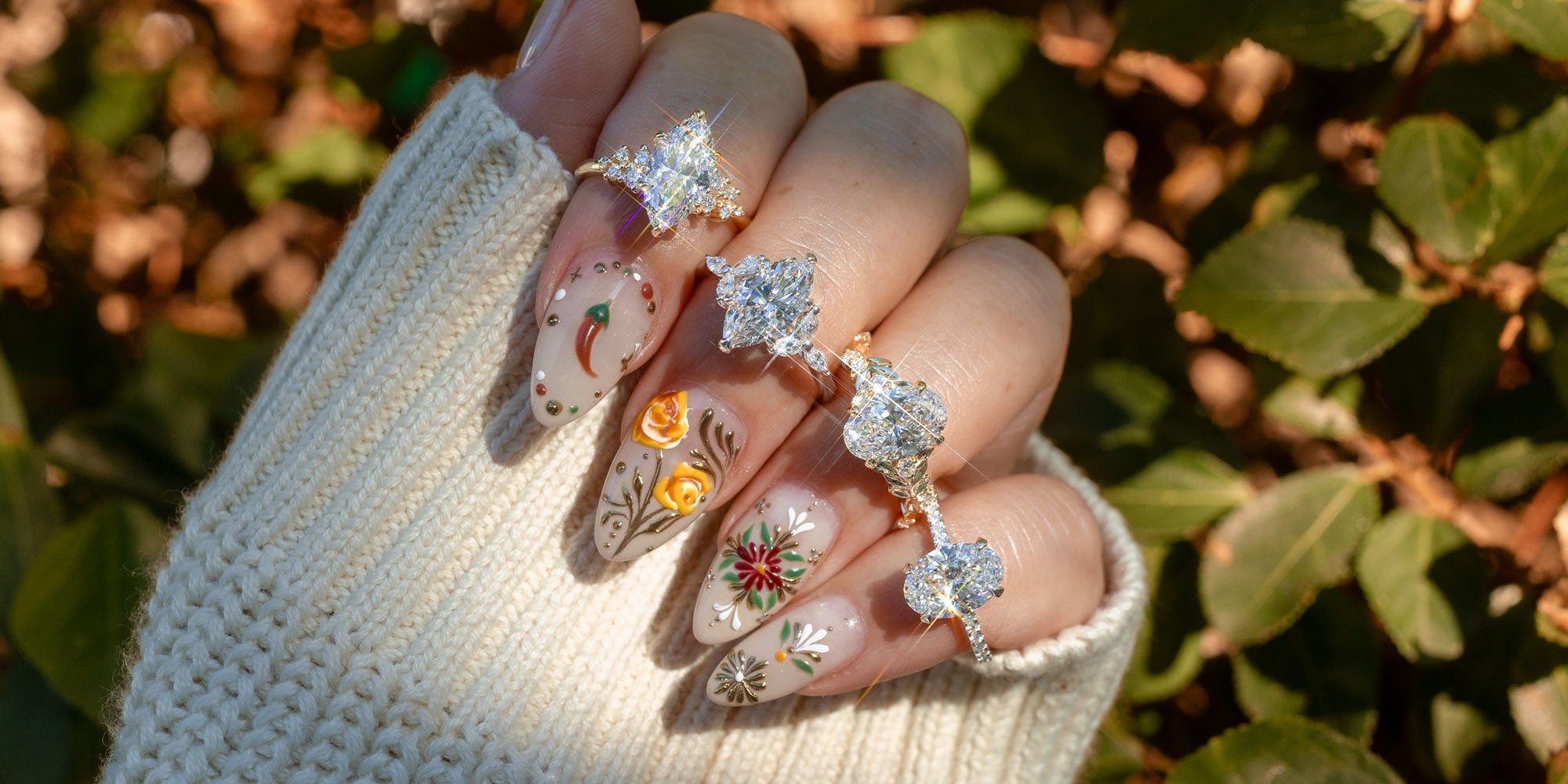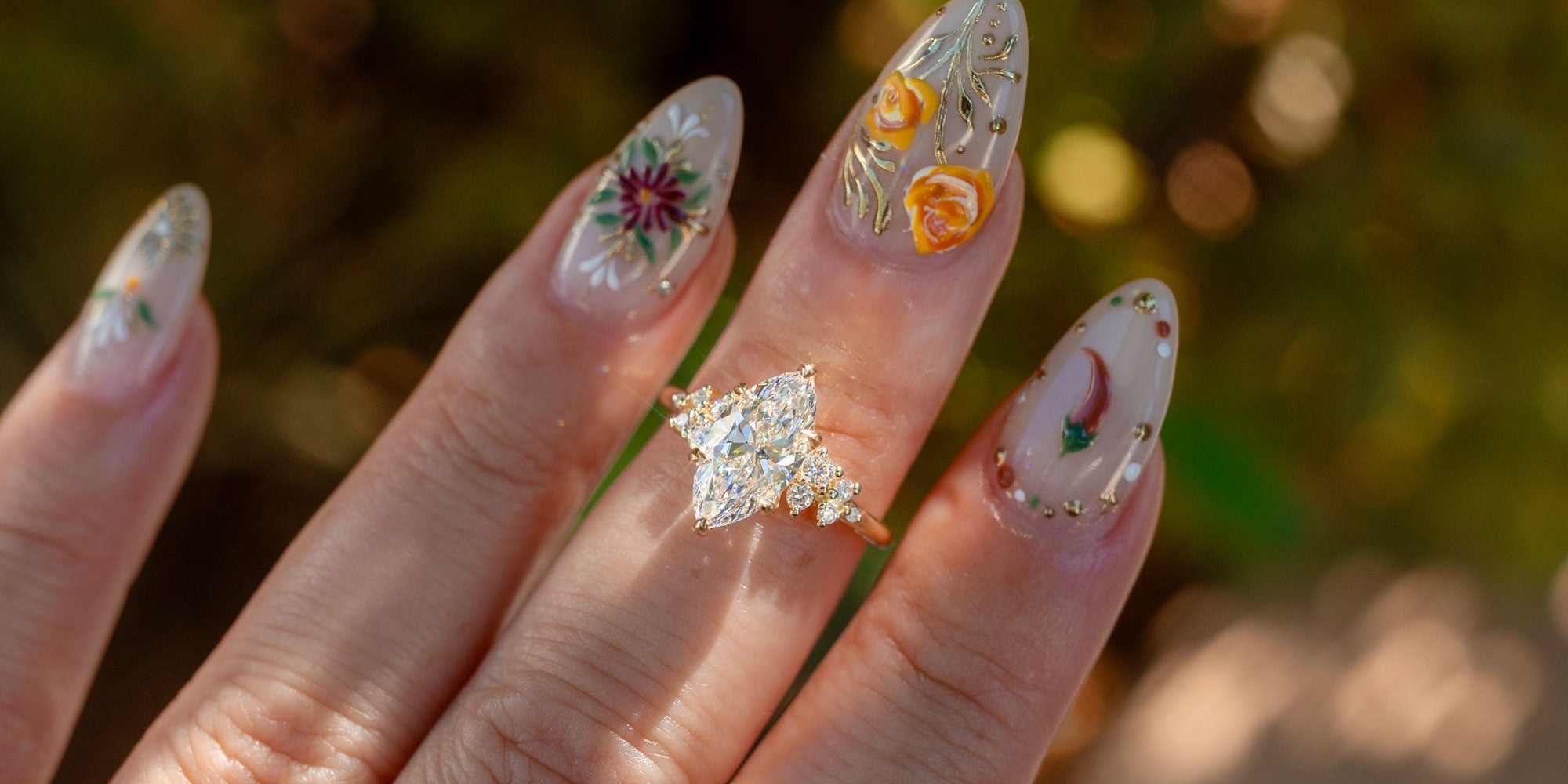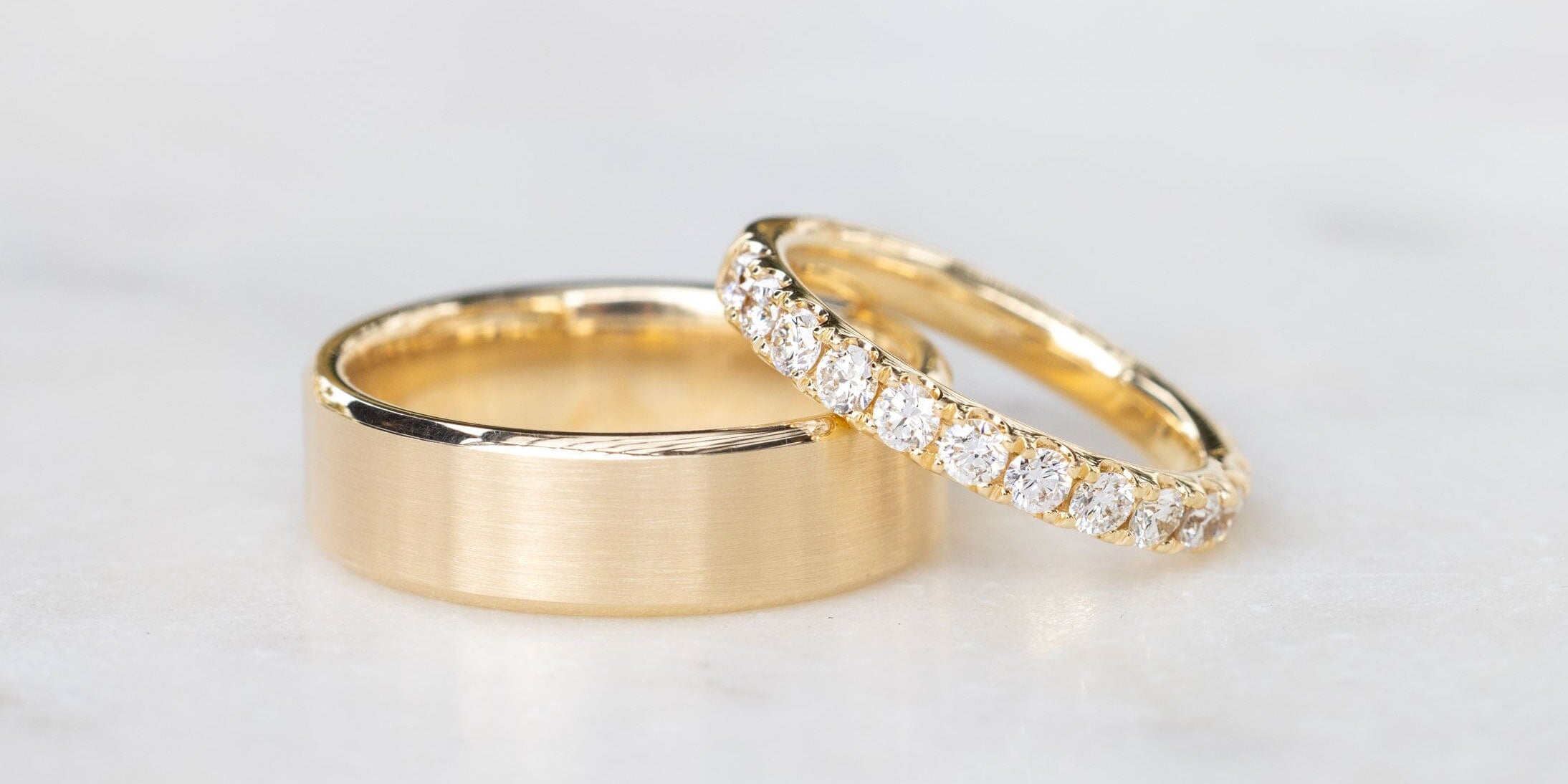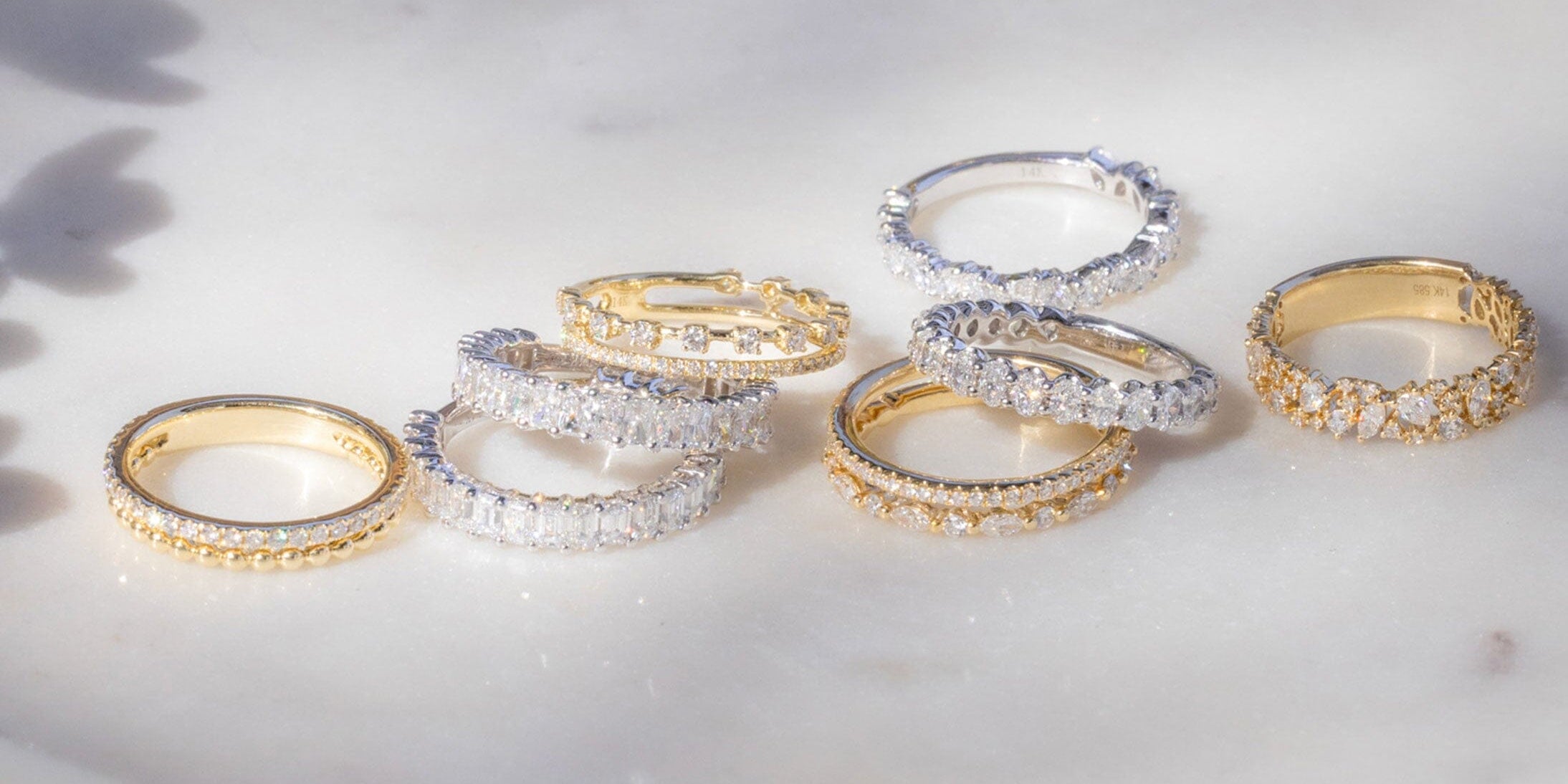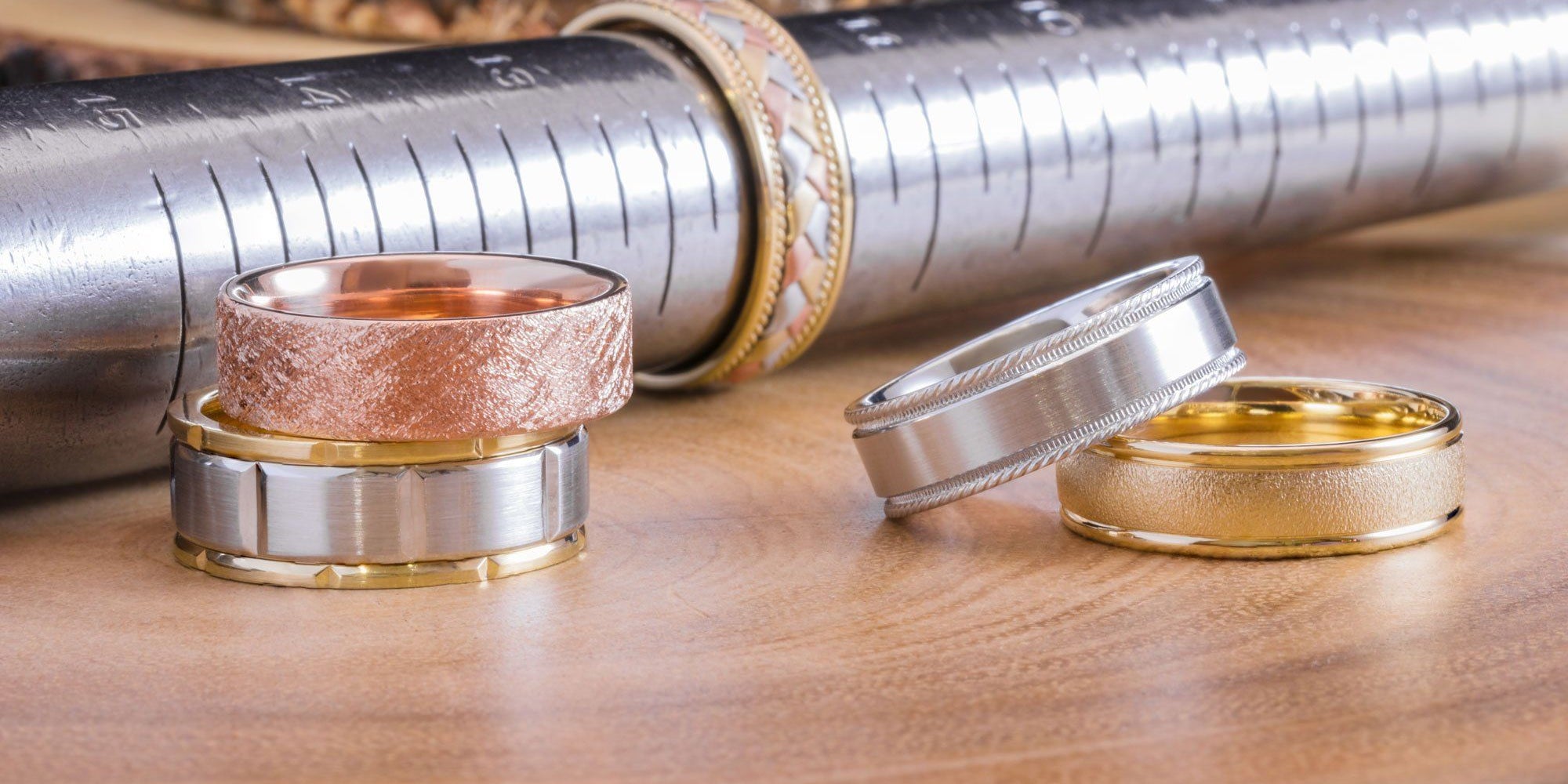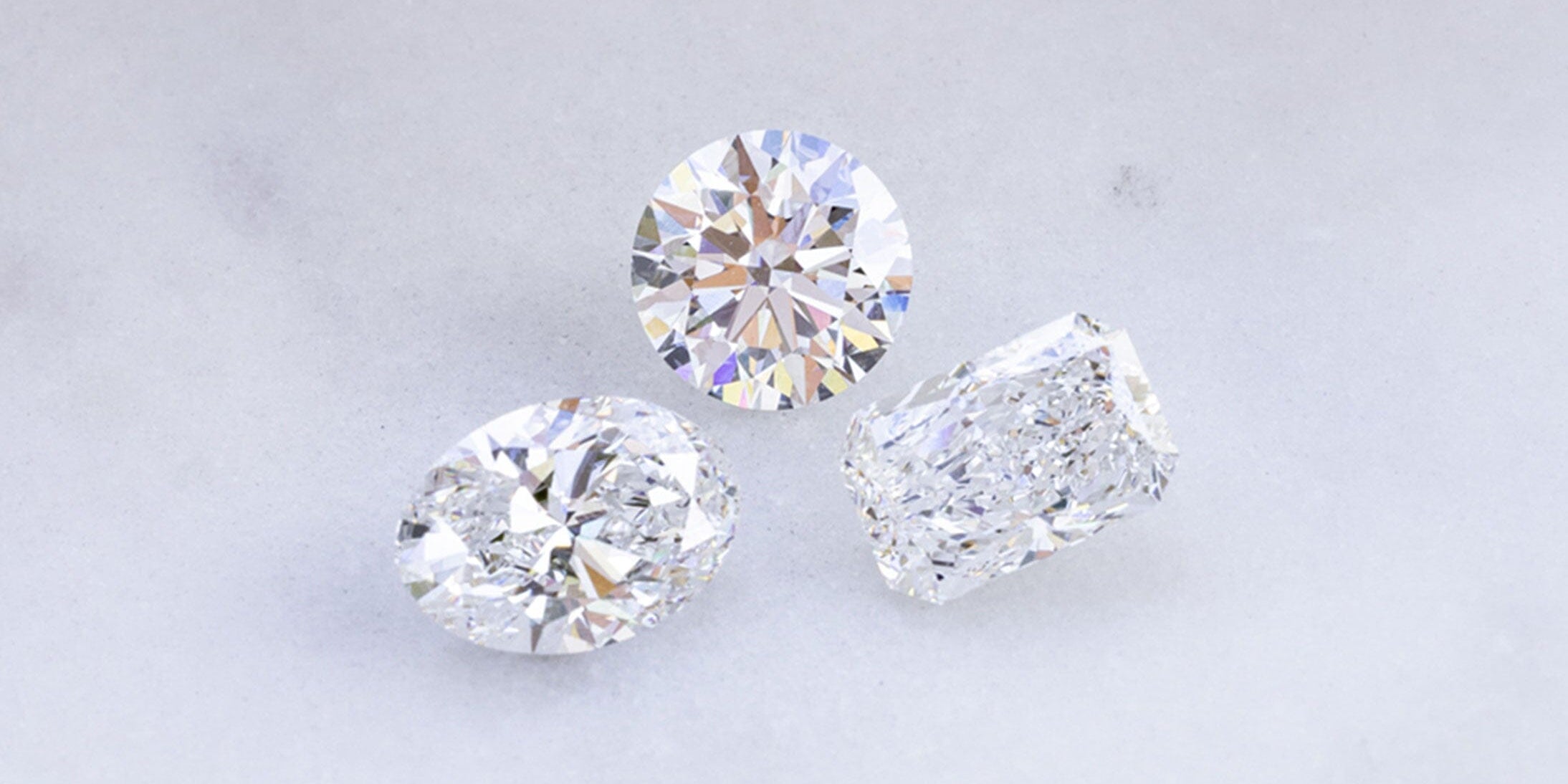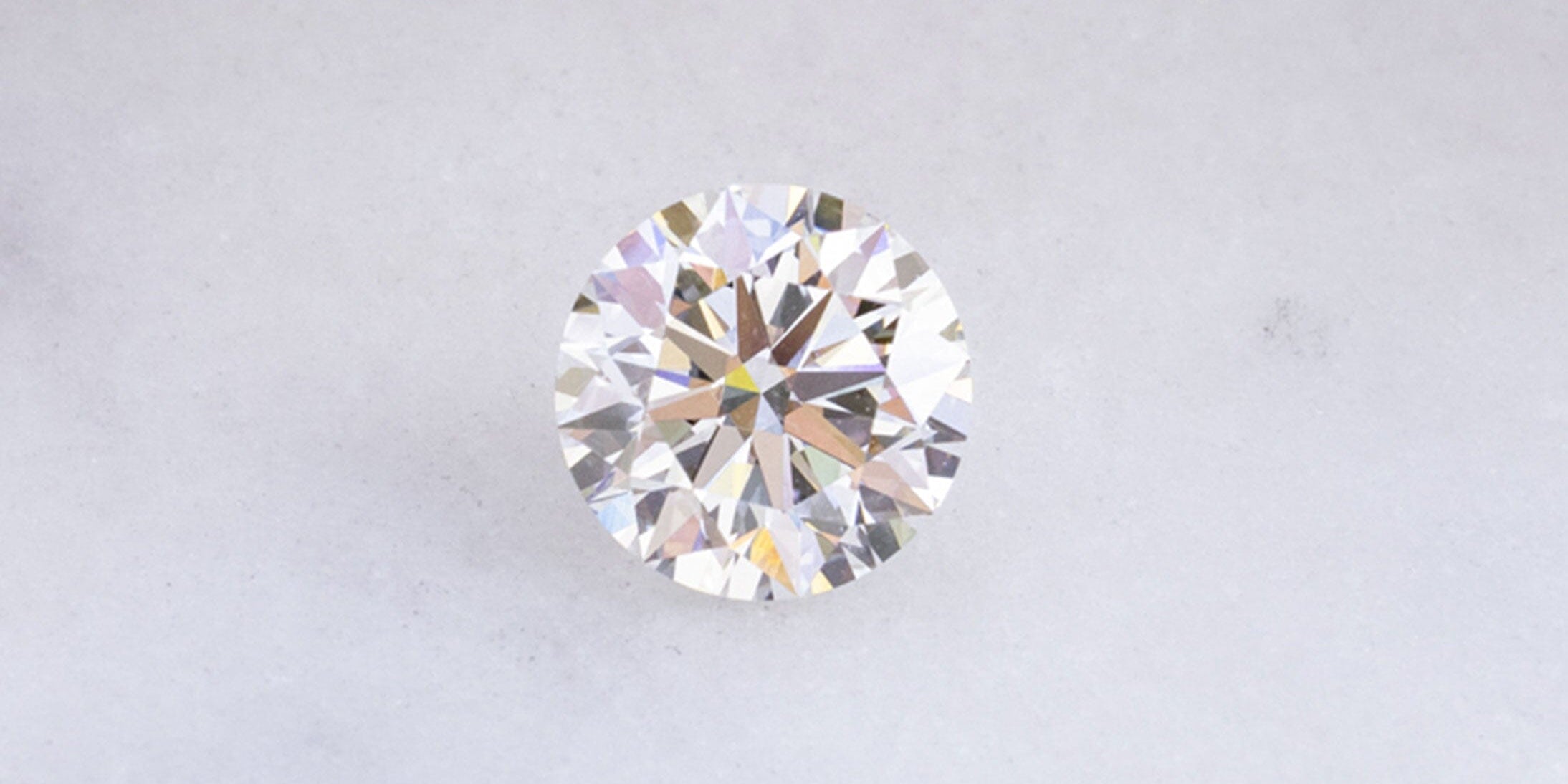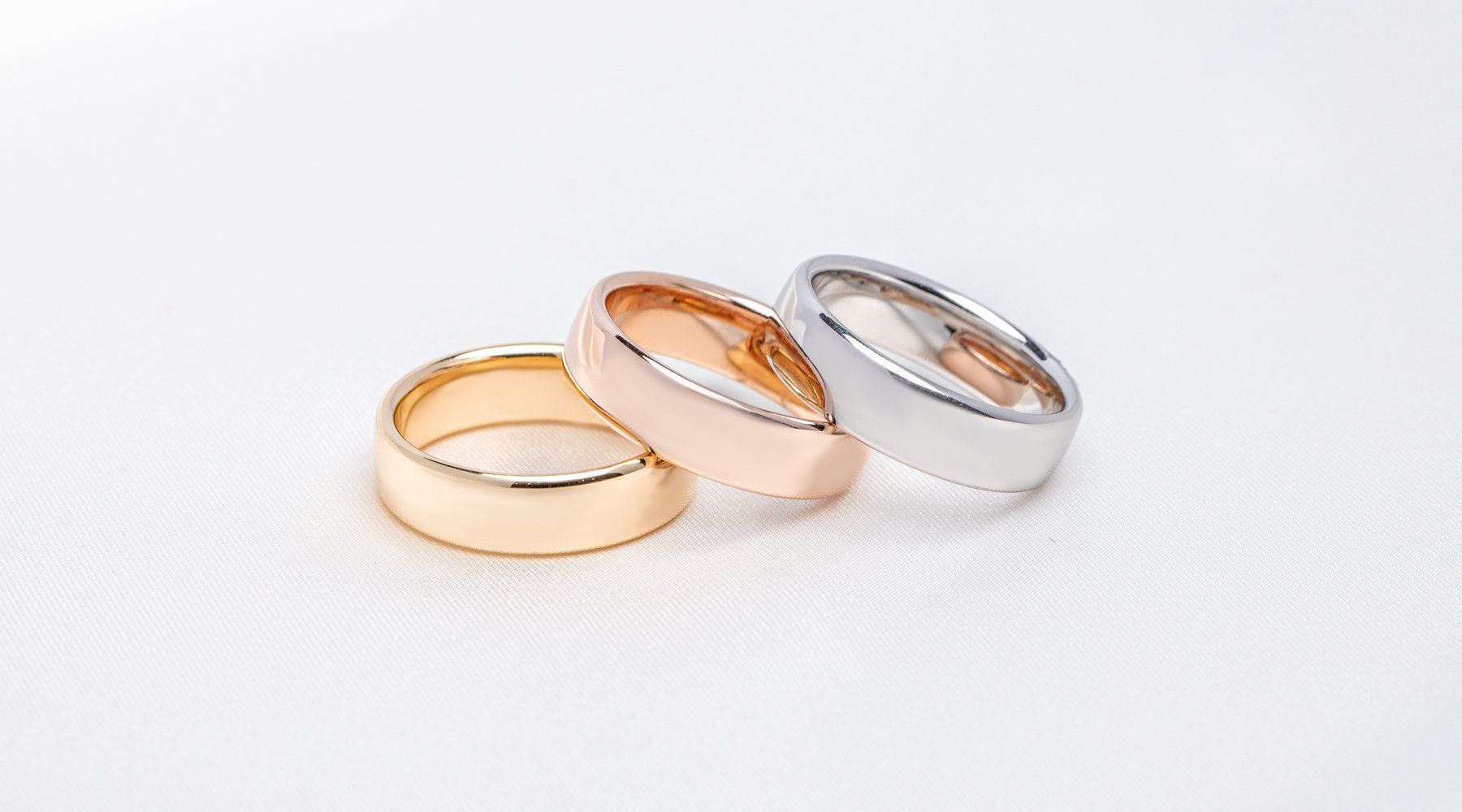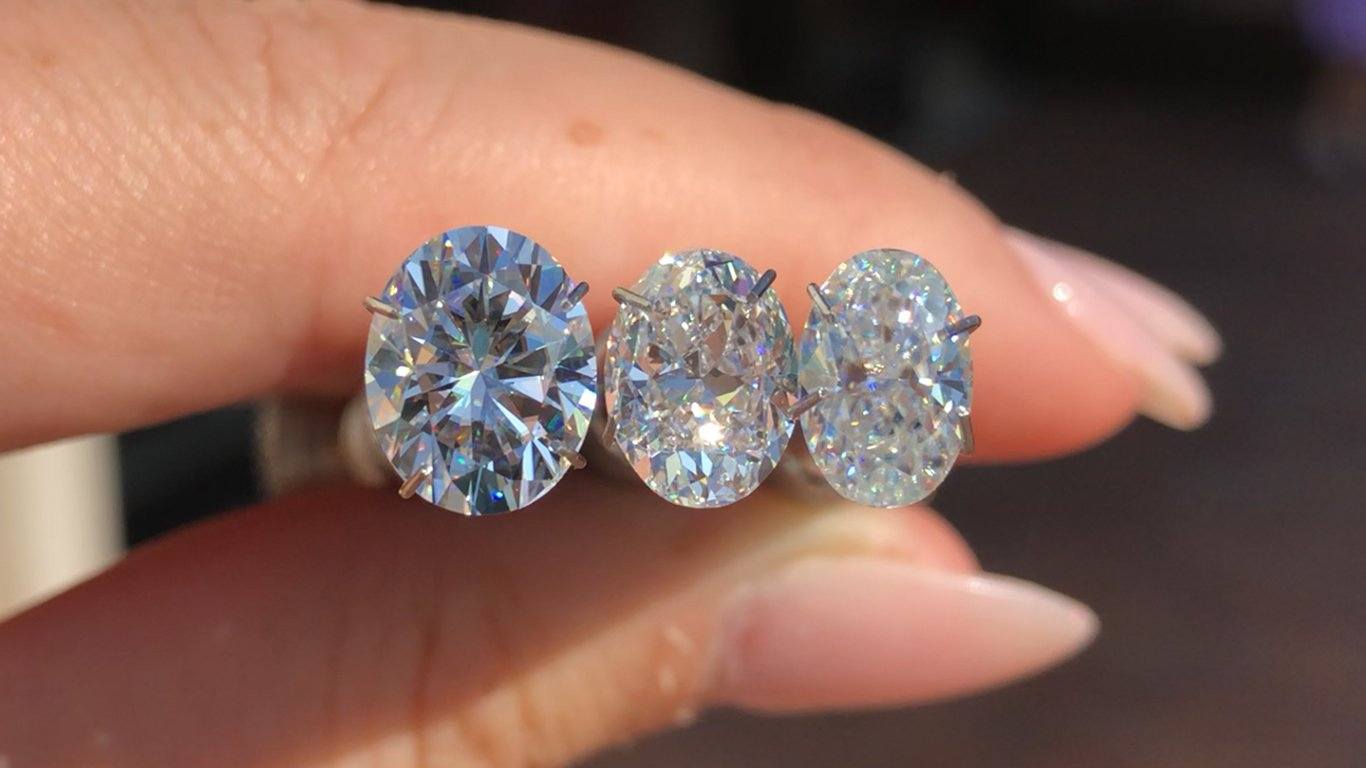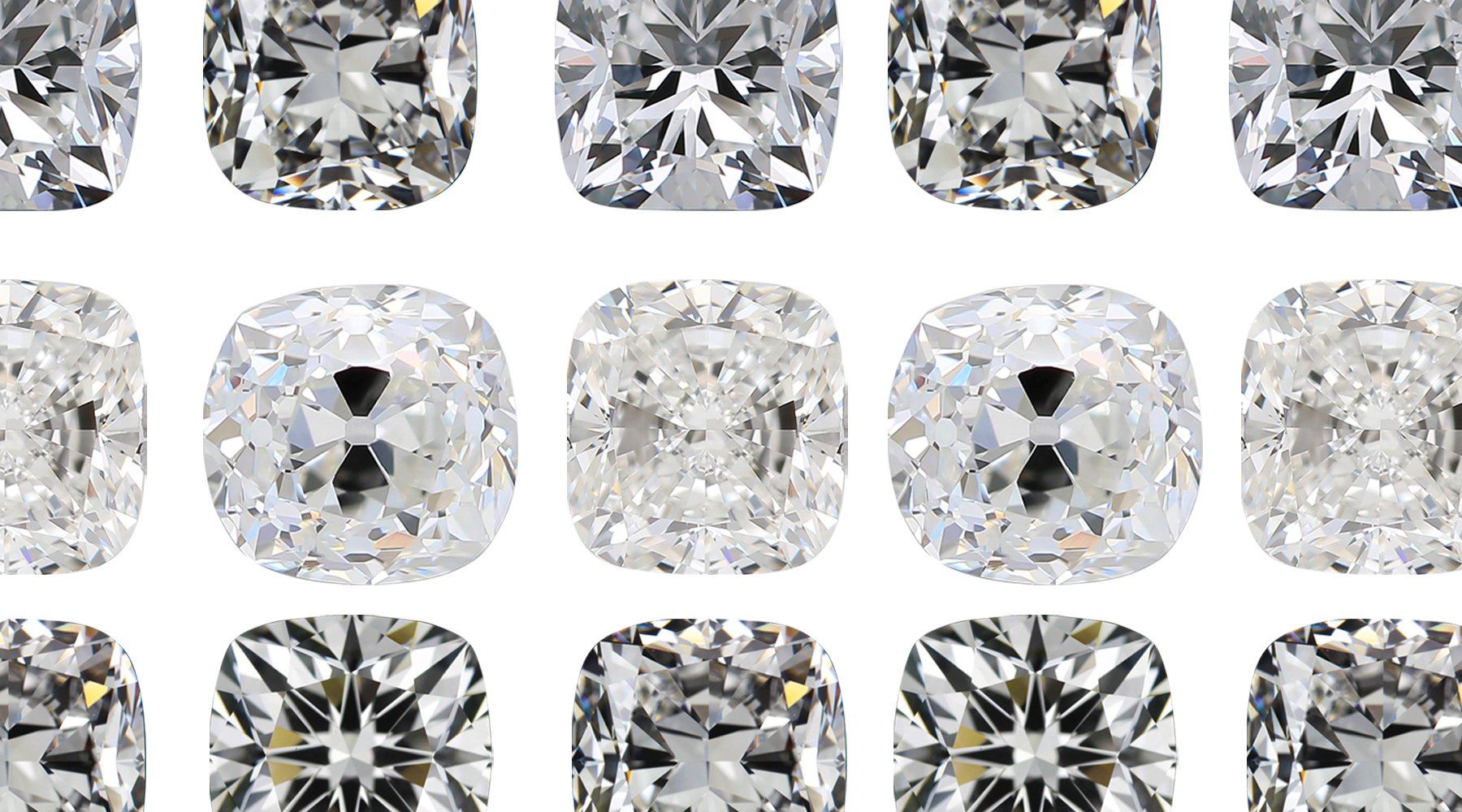Choosing the metal that is best for you often comes down to your personal preference and lifestyle. In this article, we go over the look and overall maintenance required for the most popular metal choices at our store.
White Gold
A mixture of yellow gold and other alloys to create a whitish-yellow color. We carry 14K and 18K white gold, which are made up of 58.5% and 75% pure gold. Because gold does not naturally come white, we mix gold with nickel or palladium alloy to create the whitish-yellow color of white gold. For white gold to get the lustrous white color, our fine jewelry is finished with a rhodium plating. Rhodium is part of the platinum family and is the most scratch-resistant precious metal used in fine jewelry. The plating gives white gold a bright chrome finish and is typically re-done every six months to a year to keep your engagement ring looking fresh. White gold is the most popular metal chosen at our store for engagement rings.
Yellow Gold
In gold's purest form, 24 karat, the metal is too soft to be worn as jewelry every day. Because of this, yellow gold is mixed with zinc and copper to increase durability and strength. Yellow gold can come in a variety of different karats but is typically available in 14K or 18K for fine jewelry. 14K and 18K yellow gold are the sweet spots for durability and the amount of pure gold.
Rose Gold
Also known as pink gold or red gold is a combination of pure gold, copper, and silver. We carry rose gold in 14K and 18K in many different jewelry styles. 14K has a more blush pink shade, and 18K has a more orange-pink color. Rose gold first gained popularity in 19th Century Russia because of Carl Faberge's Faberge Eggs. Rose gold became popular in the United States around the 1920s because of its romantic, feminine color and has become a staple in many women's jewelry collections.
Platinum
When comparing pure gold and pure platinum, gold is actually the more expensive metal. However pure 24K gold is hardly used in fine jewelry, whereas you will commonly be able to find platinum jewelry that is anywhere from 85-95% pure. Platinum is the only pure white metal used in fine jewelry and is also hypoallergenic. At our store, we carry 950 platinum.
- Karat - Karat is the unit used to measure the purity of gold. Not to be confused with Carat, a measurement of weight.
- 14K Rose Gold (14KR) - 58.5% gold, 41.5% silver and copper.
- 14K Yellow Gold (14KY) - 58.5% gold, 25% silver, 17% copper
- 14K White Gold (14KW) - 58.5% gold, 41.5% nickel, copper, and zinc
- 18K Rose Gold (18KR) - 75% gold, 22.25% copper, 2.75% silver
- 18K Yellow Gold (18KY) - 75% gold, 12.5% copper, 12.5% silver
- 18K White Gold (18KW) - 75% gold, 10% palladium, 10% nickel, 5% zinc
- 24K Yellow Gold (24K) - 100% gold
- Platinum (PT950, PT, 950) - 95% platinum, 5% alloy metals (usually ruthenium, copper, cobalt, iridium, rhodium, or palladium)
- Sterling Silver - 92.5% silver, 7.5% copper
- Tungsten Carbide - Tungsten carbide is a 9 on the hardness scale, that can only be scratched by a material that’s an equal or higher hardness which would be diamonds or moissanite. Because it’s so hard, it is also very brittle. What that means is if you drop it or subject it to enough pressure it can shatter or break, so it’s not indestructible. As compared to other metals tungsten rings are heavy and it is highly durable. It is 10 times harder as compared to 18K gold and 4 times harder than titanium. Tungsten carbide rings are made from the chemical compound tungsten and carbon atoms. Before a tungsten ring is made it begins in a powder form and then is pressed together to form the desired shape.
- Titanium - Titanium, while much harder than gold and platinum, is still malleable. That means it has a little more give and won’t shatter if dropped, but it can warp under rare conditions. Titanium is corrosion, tarnish, scratch, and break-resistant. Titanium has a hardness of 6.
- Stainless Steel - It is a lightweight multipurpose metal that has been used for the production of kitchen appliances for years. Stainless steel rings are the least expensive. However, they are not as scratch-resistant as tungsten carbide. Stainless steel is not durable as compared to other metals.
Important things to know about the metal types
- Any type of gold or platinum is not indestructible and will show wear and tear over time.
- We only repair and work on fine jewelry (14K, 18K, PT). This includes sizing, refinishing, soldering, etc.
- We only custom make jewelry in (14K, 18K, PT)
- We only custom make rings in PT that are 2mm or wider.
- We do not repair or work on sterling silver, tungsten, stainless steel, or titanium.
- Tungsten, stainless steel, and titanium are non-sizable. If a different size is needed, a new ring needs to be purchased.
- Tungsten, stainless steel, and titanium are not able to be re-finished. A new ring needs to be purchased.
| Weight / Composition | Hardness / Resistance to Scratching | Color | Allergenic | Maintenance | Pricing | |
| Platinum | 75 - 80% heavier than 14k gold 95% platinum, 5% iridium |
Scratches easier than 14k and 18k gold | Maintains its white color forever. The color is darker, more gray, than rhodium-plated white gold. | Hypoallergenic | Long term maintenance includes re-polishing typically every 6 months to 2 years depending on wear and body chemistry. | $$$ |
| 18k White Gold | 15 - 20% heavier than 14k gold 75% gold, 25% additional metals: zinc, copper, silver, nickel (white gold) |
Softer than 14k gold but harder than platinum | Will eventually tinge to its natural light yellow (requiring rhodium plating) | 17% of women and 3% of men are allergic to the nickel content found in the white gold alloys | Long term maintenance includes re-polishing and re-plating (rhodium finish) typically every 6 months to 2 years depending on wear and body chemistry | $$ |
| 14k White Gold | 58% gold, 42% additional metals: zinc, copper, silver, nickel (white gold) | 14k gold is the hardest and will maintain its high polish the longest | Will eventually tinge to a very light yellow (requiring rhodium plating) | 17% of women and 3% of men are allergic to the nickel content found in the white gold alloys | Long term maintenance includes re-polishing and re-plating (rhodium finish) typically every 6 months to 2 years depending on wear and body chemistry | $ |
| Vickers Hardness of Precious Metals | |
| Diamond | 10000 HV |
| Rhodium (plating) | 800 HV |
| 14K White Gold | 230 HV |
| 18K White Gold | 210 HV |
| 14K Yellow Gold | 155 HV |
| 14K Rose Gold | 150 HV |
| 18K Yellow Gold | 140 HV |
| 18K Rose Gold | 140 HV |
| Platinum | 125 HV |
| 24K Gold | 75 HV |
| Sterling Silver | 75 HV |



